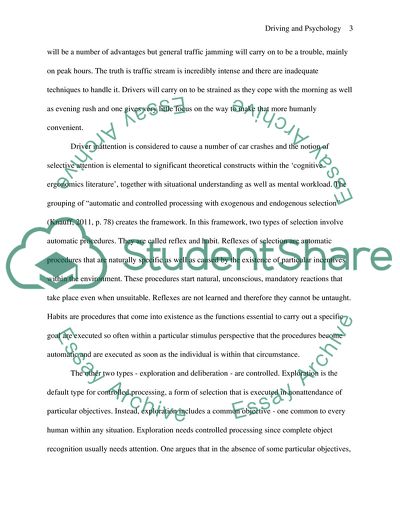Cite this document
(Driving is a task that is highly dependent on attentional processes Coursework, n.d.)
Driving is a task that is highly dependent on attentional processes Coursework. https://studentshare.org/psychology/1768145-driving-is-a-task-that-is-highly-dependent-on-attentional-processes-controlled-and-automatic-with-reference-to-theories-and-empirical-evidence-consider-and-describe-the-aspects-of-attention-that-are-involved-in-driving-and-discuss-how-the-use-of-mobil
Driving is a task that is highly dependent on attentional processes Coursework. https://studentshare.org/psychology/1768145-driving-is-a-task-that-is-highly-dependent-on-attentional-processes-controlled-and-automatic-with-reference-to-theories-and-empirical-evidence-consider-and-describe-the-aspects-of-attention-that-are-involved-in-driving-and-discuss-how-the-use-of-mobil
(Driving Is a Task That Is Highly Dependent on Attentional Processes Coursework)
Driving Is a Task That Is Highly Dependent on Attentional Processes Coursework. https://studentshare.org/psychology/1768145-driving-is-a-task-that-is-highly-dependent-on-attentional-processes-controlled-and-automatic-with-reference-to-theories-and-empirical-evidence-consider-and-describe-the-aspects-of-attention-that-are-involved-in-driving-and-discuss-how-the-use-of-mobil.
Driving Is a Task That Is Highly Dependent on Attentional Processes Coursework. https://studentshare.org/psychology/1768145-driving-is-a-task-that-is-highly-dependent-on-attentional-processes-controlled-and-automatic-with-reference-to-theories-and-empirical-evidence-consider-and-describe-the-aspects-of-attention-that-are-involved-in-driving-and-discuss-how-the-use-of-mobil.
“Driving Is a Task That Is Highly Dependent on Attentional Processes Coursework”. https://studentshare.org/psychology/1768145-driving-is-a-task-that-is-highly-dependent-on-attentional-processes-controlled-and-automatic-with-reference-to-theories-and-empirical-evidence-consider-and-describe-the-aspects-of-attention-that-are-involved-in-driving-and-discuss-how-the-use-of-mobil.


